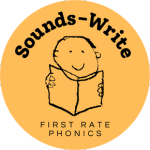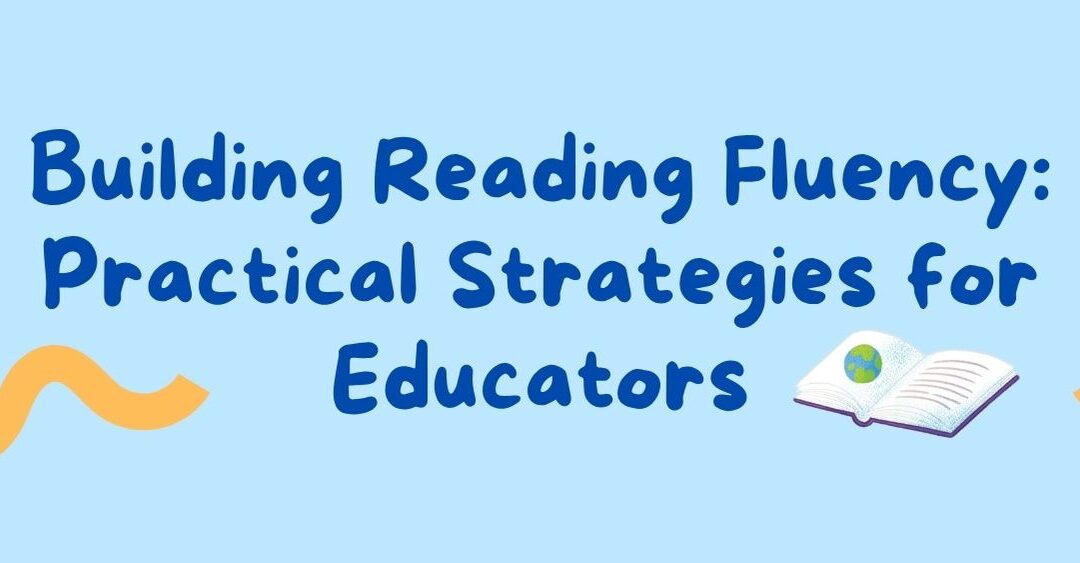Fluency is often described as the bridge between learning to decode and reading with true comprehension. But what does fluency really involve and how can teachers best support it in the classroom?
In our recent Sounds-Write webinar, Reaching Fluency, Practical Strategies and Tools for Monitoring, literacy specialist Jacinda Vaughan explored the core components of fluency, practical strategies for developing it, and tools for monitoring progress. Below is a summary of the key insights and takeaways for educators.
Resources
What is reading fluency?
Reading fluency is more than just reading quickly. It’s made up of three interconnected components:
- Accuracy – correctly recognising words on the page. Research suggests comprehension begins to suffer when accuracy drops below 95%.
- Rate – the speed at which students identify words, often measured in words correct per minute. Accuracy and rate together form automaticity.
- Prosody – expressive reading that reflects phrasing, rhythm, and meaning. Prosody shows that a student understands what they are reading.
As Dr. Timothy Rasinski puts it, fluency is “reading with and for meaning.” Without it, comprehension strategies cannot succeed.
Why fluency matters
Fluency acts as the bridge to comprehension. On one side lies code knowledge, blending, segmenting, and phoneme manipulation; on the other side is effortless understanding of connected text.
When decoding becomes automatic, students free up cognitive energy to focus on comprehension. As Professor Pamela Snow describes:
“If comprehension is the destination, then decoding accurately and efficiently is the on-ramp to the highway to get there.”
Our free resource, Helping Your Child to Become a Fluent Reader, helps parents understand fluency and how to support learning at home.
The role of decodable texts
Decodable texts are the “training wheels” of reading. They allow children to practise exactly what they’ve been taught in phonics sessions, without guessing from pictures or context.
When selecting decodable texts, keep in mind:
- they should closely align with your phonics sequence.
- they must provide practice at an accessible level (we recommend at least a one-unit lag from current teaching).
- the focus should be decoding, not prediction.
- texts should balance challenge with success, giving students confidence as well as practice.
While decodable texts are essential in the early years, once students master sufficient code knowledge, they should transition into authentic and curriculum-based texts.
Try our free decodable e-books and explore a full suite of resources to support your teaching.
Strategies to develop fluency
Fluency develops best through structured, explicit, and varied practice. Jacinda shared several classroom strategies, moving from teacher-led scaffolding to independent reading:
- modelling – sharing rich, expressive texts aloud shows students what fluent reading sounds like.
- echo reading – the teacher reads a word, phrase, or sentence, and students repeat. Highly supportive for beginners and reluctant readers.
- choral reading – the class reads aloud together in unison, building accuracy and confidence while practising expression.
- paired reading – two students take turns reading sentences or paragraphs, with opportunities to prompt and support each other.
- repeated reading – students reread the same passage several times (often 3–5 repetitions). Research consistently shows this improves speed, accuracy, and comprehension, particularly for struggling readers.
Each approach moves students from guided support (“I do, we do”) toward independent, confident fluency (“you do”).
Monitoring fluency
To support student progress, fluency must be monitored deliberately.
Effective monitoring includes:
- Words Correct Per Minute (WCPM) – a widely used measure combining accuracy and rate.
- progress graphs – visual tracking motivates students and builds ownership of their learning.
- prosody rubrics – tools like Dr. Tim Rasinski’s Multidimensional Fluency Scale assess expression, phrasing, and smoothness.
Comprehension typically occurs at a natural speech rate of 120–190 words per minute, with basic comprehension beginning around 90–100. Monitoring allows teachers to set meaningful goals, celebrate small wins, and adjust instruction responsively.
Final thoughts
Fluency is more than speed – it’s the ability to read accurately, automatically, and expressively, enabling true comprehension. Through deliberate use of decodable texts, scaffolded strategies, and ongoing monitoring, educators can help every student cross the bridge from decoding to understanding.
As Jacinda reminded us:
“There is no comprehension strategy powerful enough to compensate if a student cannot lift the words from the page.”
By embedding these fluency practices into daily instruction, we give our students the tools they need not just to read, but to thrive as lifelong readers.
Reflection questions for teachers
- How do I currently define and monitor reading fluency in my classroom?
Do I give equal attention to accuracy, rate, and prosody, or do I tend to emphasise one over the others? - Am I providing enough opportunities for students to practise fluency in connected text?
How can I balance decodable texts, authentic literature, and curriculum-based reading to best support my learners? - Which fluency-building strategies (echo reading, choral reading, paired reading, repeated reading) do I use most often?
Are there strategies I could introduce or adapt to better support reluctant or struggling readers? - How am I monitoring progress in fluency beyond words correct per minute?
Could tools like prosody rubrics or student self-reflection add more depth to my assessments? - How do I celebrate and motivate progress in fluency?
What routines or systems could I implement to make students more aware of their own growth and more engaged in reading practice?
Unlock literacy success with Sounds-Write
Access quality-first training and resources through our structured, systematic synthetic phonics programme. Grounded in the science of reading and learning, Sounds-Write equips educators with the knowledge and tools to teach children to read, write, and spell with confidence. Our evidence-based approach supports effective instruction across all learning environments.
You may also like
Sounds-Write Initial Code app comes top of the class
With more than 9,000 apps marketed as supporting early reading development, parents and educators find it almost impossible to choose truly effective apps for reading instruction. The authors of the study conclude that despite widespread use, most literacy apps do not...
Phonics Screening Check – Top Tips for a Strong Start to the Academic Year (UK)
Whilst the timing of this blog was prompted by the start of the new academic year in the UK, the guidance will be useful to teachers using a Phonics Screening Check anywhere around the world. Welcome to the start of another new academic year! Whilst the PSC (Phonics...
Decodable Readers vs Levelled Readers: Building Stronger Foundations for Early Literacy
When choosing resources to support early reading, educators often face a key decision: decodable readers vs levelled readers. While both offer structured experiences for beginning readers, the path they build toward literacy is vastly different. In this blog, we’ll...








